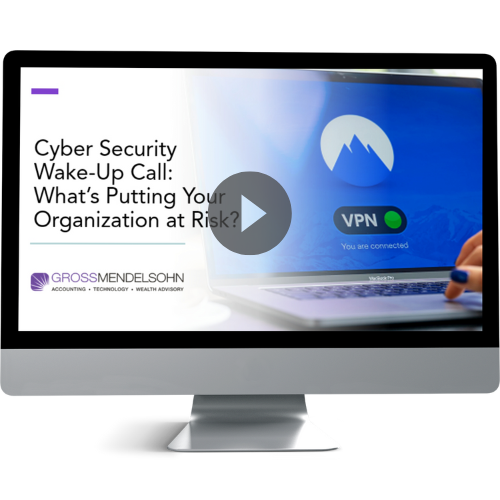When a business has employees who work remotely in any capacity, network access and communication between employees and customers becomes even more essential. As more businesses acclimate to a remote setup, it’s important to make sure you’re fully maximizing the productivity of your workforce.
This begs the question, “Is your technology poised to support efficiency and productivity in a remote environment?” Additionally, it’s vital that you ensure that your technology is secure against cyber attacks looking to take advantage of your remote network.
In this article, we’ve put together some helpful tips and best practices that you should be aware of as you optimize remote work for your business and monitor potential security threats.
The Biggest Mistake Business Owners Make With Remote Work
The biggest misconception I see among business owners is thinking that their employees who are new to remote work will be as productive at home as they are in the office. For seasoned remote workers, this is realistic. But for employees working outside the office for the first time, it is unrealistic to expect the same level of productivity across the board.
It’s important for business owners to manage expectations—both their own and their employees’ expectations.
Employees who aren’t tech savvy might have trouble logging on or navigating to network files, because they might do those things differently than if they were sitting in the office. Or, an employee who has a slow internet connection in their home is inevitably going to work at a slower pace. These are situations that call for a business owner to have realistic expectations of employees.
On the flip side, business owners should remind their employees that working from home won’t be exactly the same as working from the office. For instance, we have several high-end architectural design firms as clients. They often work with huge files on powerful computers in their office. The owner of one of those firms reminded employees that things would be a bit slower due to the large file sizes while employees are working from home. Their overall experience working from home would be different from working in the office. That simple reminder from the owner went a long way in managing employees’ expectations and heading off frustration.
Cyber Security Is Everything
As more businesses have transitioned to a remote setup, it has opened up a slew of cyber security concerns. You can’t just plug in someone’s five-year-old PC to your network and expect smooth sailing. This opens up your business to potential threats.
This is where it becomes extremely important to work with an IT professional — either your in-house IT department or an outside provider (here’s how to hire a good one) — who is well versed in the latest cyber security best practices.
Regardless of whether your employees are using their own devices or equipment supplied by your office, all of those devices should, for example, have the latest endpoint protection and Microsoft updates — just to start.
We have one client that previously never had remote workers. They’re a distributor with an e-commerce site, so they already had some decent security measures in place. When their employees began working from home, the business adopted a BYOD (bring your own device) policy. The business already had a VPN that provided network access, but with the BYOD policy, the network was more vulnerable than if they were using company-issued computers.
We put remote desktop access into place for the distribution business and locked down the VPN so each employee could only access their work PC. This was done with a firewall and software they already had, along with existing computers in the office. This setup didn’t require any investment in equipment.
There’s No Better Time Than the Present to Strengthen Your Technology
There’s no better time than the present to revisit your organization’s technology plan. Working remotely makes you think of a lot of things. What’s going well? What isn’t going so well? What would you like to do that you can’t do right now from home?
The easiest time to strengthen technology is to do it before a crisis occurs. And if you don’t already have one, there is no time like the present to put together a written technology plan.
Red Flags That Remote Technology Isn’t Working Well
When you’re busy running your business, especially if you don’t have a technology background, it’s easy to miss red flags. We find that business owners often don’t know where their problem areas are with their technology. They just know something isn’t working correctly.
Here are just a few red flags that your remote setup might have a glitch, or your employees aren’t fully understanding their setup:
- Employees who are normally productive in the office aren’t nearly as productive at home
- Your employees can’t access the files they normally use
- Employees are saving files locally on their computer
#1 Tip for Remote Work Success
It comes back to having realistic expectations. If you go into remote work knowing that you won’t be able to work exactly the same as you work in the office, your expectations for output will be reasonable.
Communication Across Your Business
It is important to keep your employees connected throughout each workday with open lines of communication. Our team at Gross Mendelsohn uses Microsoft Teams as a collaboration tool to help make communication between remote employees better.
For example, our marketing team has a group in Microsoft Teams where they post work-related updates but also everyday happenings that would typically be shared with colleagues in an office setting. This added communication feature helps foster connections between members of the marketing team and allows for more casual conversation that would otherwise not exist in a remote work setting.
Key Takeaways
- Have realistic expectations for employee productivity
- Put cyber security measures in place every step of the way
- Manage employee expectations
What Are the Next Steps for Business Owners?
Now is the time to take a thorough look at your business’s IT plan and remote work setup. Take steps to make sure that your business can withstand whatever comes next.
As much as we don’t like to think about it, there will be bumps in the road that hinder your business’s ability to work efficiently. Talk with your IT expert now to evaluate how your current remote work situation is going, and how you’d like to improve it for the future. Also, check in with employees who aren’t being as productive as normal. Technology can often help solve efficiency problems.
Even if you are working from home with semi-success, this is still a prime time for you to shore up your organization’s technology. Technology is never one-and-done.
Need Help?
Our Technology Solutions Group includes a team of cyber security experts. We’re happy to meet with you for a free cyber security assessment of your organization’s IT infrastructure. Or, you can contact us online or call 410.685.5512 with any questions.


